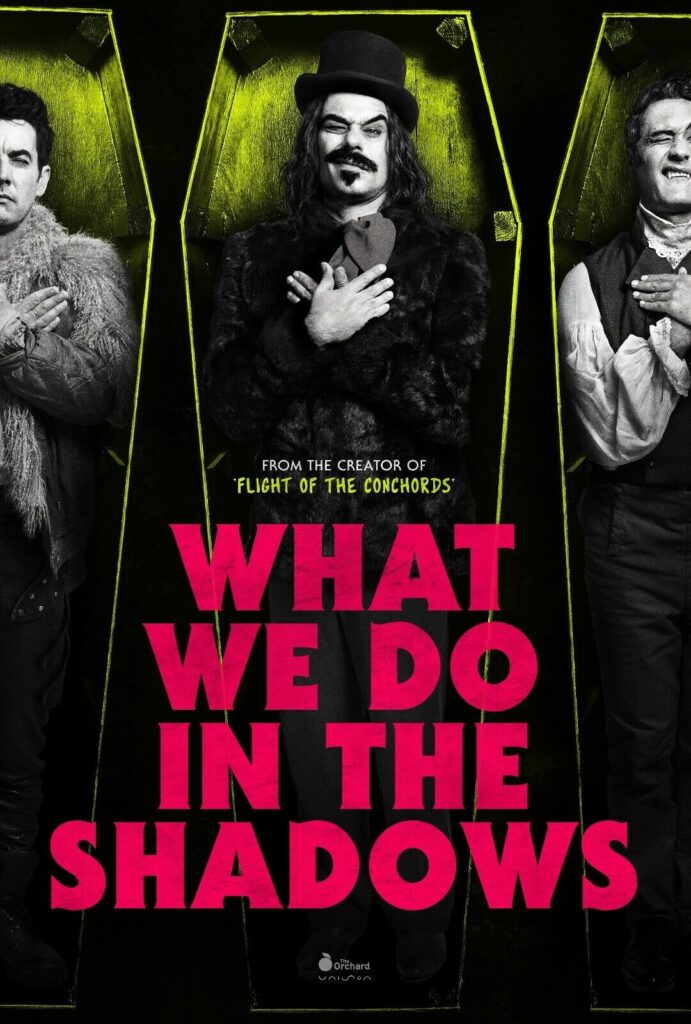
The Impact of the What We Do in the Shadows Movie Poster
Table of Contents
Introduction: Introducing What We Do in the Shadows Movie Poster
What We Do in the Shadows Movie Poster is a critically acclaimed mockumentary horror-comedy film directed by Taika Waititi and Jemaine Clement. Released in 2014, the movie gained a cult following for its unique take on the vampire genre, blending humor with supernatural elements.
Importance of Movie Posters in Marketing
Movie posters play a crucial role in the marketing and promotion of films. They serve as visual representations of the movie, enticing audiences and generating interest. A well-designed poster can effectively communicate the tone, genre, and key elements of the film, influencing viewers’ perceptions and driving ticket sales.
Brief Overview of the Movie Poster
The poster for what we do in the shadows movie poster features a striking visual composition that encapsulates the film’s comedic yet eerie atmosphere. It prominently showcases the main characters, a group of vampire roommates, against a backdrop of their gothic mansion. The title is presented in bold, stylized lettering, adding to the poster’s overall aesthetic appeal.
Visual Elements of the Poster
- Title Design: The title of the movie is rendered in a bold, blood-red font, evoking the horror genre while also hinting at the comedic elements of the film.
- Characters and Setting Depiction: The poster prominently features the main characters, each with their distinct personalities and quirks, standing in front of their mansion.
- Color Scheme: The poster utilizes a dark, moody color palette with shades of black, gray, and red, creating a sense of mystery and foreboding.
- Typography: The typography is bold and attention-grabbing, ensuring that the title stands out amidst the other visual elements.
Impact of the Movie Poster on Viewers
The what we do in the shadows movie poster has had a significant impact on viewers for several reasons:
- Attractiveness and Eye-catching Design: The poster’s visually striking design immediately grabs the viewer’s attention, encouraging them to learn more about the film.
- Conveying Genre and Tone: Through its visual elements and typography, the poster effectively conveys the comedic-horror tone of the movie, setting appropriate expectations for audiences.
- Memorable Imagery: The iconic imagery of the vampire characters and their mansion has become instantly recognizable among fans of the film, contributing to its lasting popularity.
Influence on Audience Anticipation and Excitement
The poster’s compelling design has played a crucial role in building anticipation and excitement among audiences. By offering a glimpse into the world of the film and teasing its unique premise, the poster has piqued curiosity and generated buzz leading up to its release.
Comparison with Other Movie Posters in the Genre
In comparison to other movie posters in the horror-comedy genre, what we do in the shadows movie poster stands out for its clever blend of humor and horror elements. While many posters in the genre opt for more conventional imagery, this poster takes a more playful approach, reflecting the film’s unconventional storytelling style.
Marketing Strategies Employed Through the Poster
The poster’s effective marketing strategies include:
- Visual Storytelling: The poster tells a story in a single image, introducing viewers to the film’s premise and characters.
- Brand Identity: The poster reinforces the film’s brand identity, establishing it as a unique and memorable addition to the vampire genre.
- Social Media Engagement: The poster has been widely shared and discussed on social media platforms, further amplifying its reach and generating excitement among potential viewers.
Social Media Buzz and Reactions
On social media platforms such as Twitter and Instagram, the “What We Do in the Shadows” poster has sparked enthusiastic reactions from fans and critics alike. Memes, fan art, and discussions about the poster’s symbolism and hidden details have contributed to its viral success online.
Fan Interpretations and Theories
Fans have offered various interpretations and theories about the poster’s significance, speculating about the identities and backstories of the characters depicted. Some have also drawn connections between the poster’s imagery and themes explored in the film, adding depth to their viewing experience.
Analysis of the Poster’s Cultural References
The poster incorporates various cultural references and visual motifs, drawing inspiration from classic vampire lore while also subverting audience expectations. By tapping into familiar tropes and conventions, the poster engages viewers on multiple levels, inviting them to explore its hidden layers of meaning.
Reception and Reviews from Critics
Critics have praised the “What We Do in the Shadows” poster for its inventive design and clever marketing strategy. Many have highlighted its ability to capture the essence of the film in a single image, applauding its effectiveness in generating interest and excitement among audiences.
Box Office Success and Audience Response
The poster’s impact on the box office performance of “What We Do in the Shadows” has been significant, contributing to its commercial success and positive word-of-mouth buzz. Audiences drawn in by the poster’s enticing visuals have been delighted by the film’s witty humor and inventive storytelling.
Legacy and Lasting Impact of the Poster
Years after its release, the what we do in the shadows movie poster continues to be celebrated as a prime example of effective movie marketing. Its iconic imagery and memorable design have cemented its status as a cult classic, ensuring its place in the annals of film history.
Conclusion
In conclusion, the impact of the what we do in the shadows movie poster cannot be overstated. From its eye-catching design to its effective marketing strategies, the poster has played a pivotal role in shaping audience perceptions and generating excitement for the film. As a result, it stands as a testament to the power of visual storytelling in the world of cinema.